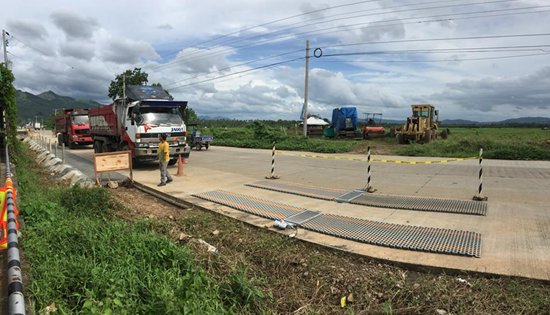


To find out how much weight a vehicle's axles are carrying while it travels on a road, axle load surveys are carried out. These assessments are critical for evaluating the impact of vehicle loads on road infrastructure, notably for assessing pavement design, road maintenance needs, and maintaining compliance with legal axle load restrictions. Heavy trucks in particular can seriously harm roadways when they are overloaded, resulting in increased maintenance expenses and a shorter road life.
+Get QuoteAxle load surveys are used for two purposes:
Road maintenance and pavement design: By knowing the axle loads, designers can create roads that can handle the strain of high traffic and schedule maintenance tasks to extend the life of the road.
Enforcement of Load limitations: By preventing overloading and guaranteeing adherence to safety requirements, axle load surveys assist in the enforcement of the legal weight limitations for automobiles.
Traffic Impact Studies: The information is used to evaluate the relative contributions of various vehicle types to traffic congestion and road deterioration.
Toll and Tax Systems: Axle load surveys are useful in determining the proper toll, as certain toll systems or road taxes are dependent on the weight of the vehicle.
Axle Load Survey Types:
Static Weighing: Using portable scales or static weighbridges, each axle of a vehicle is weighed separately while it is stopped.
Dynamic Weighing (Weigh-in-Motion, or WIM): In dynamic weighing, axle loads of cars are measured while they travel at regular speeds using sensors buried in the road surface. In terms of ongoing data collection, this approach is more effective.
Weigh pads that are portable: These are scales that are designed to be used beneath a car's wheels in order to measure axle load. This is helpful for performing surveys at different places without the need for long-term infrastructure.
Bridge Weighing: In certain situations, specific sensors are mounted on bridges to gauge passing cars' axle loads.
Important Information Gathered:
Each axle's axle load, expressed in tons or kilograms
Total weight of all axle loads on a vehicle
Axles (used to classify cars according to weight class)
Type of vehicle (car, truck, bus, etc.)
Velocity (in dynamic balance)
Uses:
Pavement Design: In order to minimize road damage, roads are designed with the proper thickness and materials to sustain heavy traffic, using axle load data.
Road Maintenance Planning: Assists in determining which roads need repair or strengthening to prevent damage from large cars.
Enforcement of Legal Load restrictions: Authorities have the authority to keep an eye on adherence to load restrictions and fine cars that exceed them.
Traffic Management: By rerouting large vehicles to less congested or more well-equipped routes, data helps to optimize traffic flow and infrastructure use.
Toll Road Management: Axle load information can be utilized to more precisely compute tolls. Certain toll systems impose a fee on cars according to their weight.
Benefits of Axle Load Surveys:
Protects Road Infrastructure: The lifespan of road infrastructure can be increased, lowering the frequency and expense of repairs, by monitoring and controlling axle loads.
Enhances Safety: Since overweight cars can be more difficult to control and are more prone to cause accidents, it is safer for all users of the road when they are prevented from operating on public roadways.
Encourages Sustainable Infrastructure: Information gathered from axle load assessments is used to build roads that are more economical and sustainable, meaning fewer repairs will be required over time.